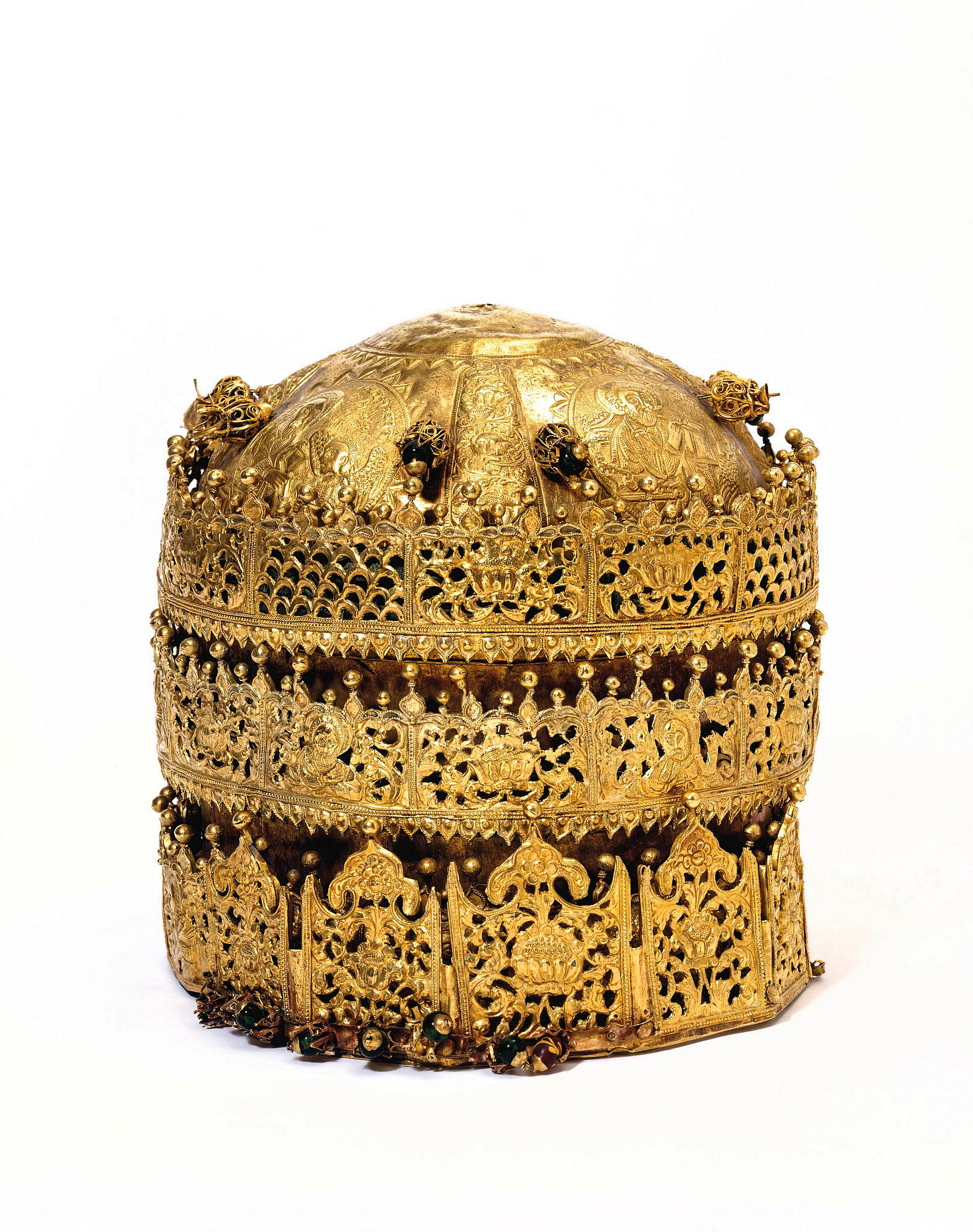Curated by Shola Lawal. Art direction by Wynona Mutisi
The Museum of Stolen History is a new series by The Continent that tells the stories of some of Africa's most significant artefacts.
This gold crown with stunningly delicate filigree belonged to Emperor Tewodros II, the King of Kings of Abyssinia. It was the most remarkable artefact looted during the British Army’s 1868 siege of Maqdala, the king’s hilltop fortress capital.
The crown, made of three ornamented tiers, has been on “permanent” display at London’s Victoria and Albert Museum since 1872. Its topmost tier is a domed cylinder embossed with depictions of the Biblical disciples Matthew, Mark, Luke and John. Depictions of the 12 apostles are also woven in intricate lattice.
Tewodros was a powerful monarch who conquered many parts of Ethiopia and aimed to unite warring lords into a modern state. He too seized treasures on his many conquests. The Golden Crown was likely taken from the Church of Our Lady of Qwesqwam in northern Gondar. The Church had been given the crown from a former ruler.
Tewodros’ collection in Maqdala was, in a sense, Ethiopia’s first national museum, according to Alula Pankhurst, a member of Ethiopia’s National Heritage Restitution Committee.
Historians described the king as graceful and courteous to nobles and paupers alike, but Tewodros also had a terrible rage. After his first wife, Tewabech Ali, died in 1858, more of that ferocious nature emerged. The king, for example, ordered a massacre after John Bell, his European friend and trusted adviser, was killed during a military campaign.
Around the same time, Tewodros’ kingdom increasingly came under threat from invading Ottoman Turks and internal rivals. His rule and army shrank. In 1863, Tewodros wrote to England’s Queen Victoria, seeking help against the Muslim Turks from a fellow Christian monarch. But his letter, sent through the British Consul in Ethiopia, was ignored because England had allied with the Ottomans. Insulted, Tewodros imprisoned the consul and several other Europeans. When the British Foreign Office sent a diplomatic mission to plead for their release, Tewodros seized them too.
A massive British Army unit dispatched from India descended on Maqdala on 9 April 1868. The force comprised 13,000 troops, supported by an auxiliary force of almost 40,000 more, and was armed with a barrage of modern weaponry drawn by 44 elephants. Regional warlords aided the long march into the Ethiopian highlands.
Many of Tewodros’ 4,000 soldiers were massacred as the British approached the fortress. In a final act of defiance, Tewodros shot himself with a pistol that had been a gift from Queen Victoria herself. Contemporary accounts say that a ghost of a smile lingered on his face when his body was found.
The Brits plundered Maqdala, taking much of Tewodros’ collection, even locks of his hair and the robe he wore. Then they burned the fortress compound, which consisted of about 3,000 buildings. A government archaeologist embedded in the army took possession of the crown, a gold chalice, and hundreds of treasures like manuscripts, crosses and tabots (wooden tablets bearing replicas of the Ark of the Covenant, allowed to be seen only by priests). Those items ended up in several British museums and castles.
Tewodros’ wife, Empress Tiruwork Wube, and their son, Prince Alemayehu, were captured. The empress died before reaching England. Queen Victoria is said to have liked the prince and sent him to prestigious schools. However, he grew unhappy and sick and passed away in 1879 at age 19. The British royal family refuses to return his remains, because exhuming him would “disturb” others buried at St George’s Chapel in Windsor Castle.
Britain rejected a formal request from Ethiopia to return all the loot but has “gifted” back a few items, including a silver crown in 1925 and a lock of Tewodro’s hair in 2019. As for the Golden Crown, the Victoria and Albert Museum says it could consider a long-term “loan” to Ethiopia, because British law restricts the permanent return of historical artefacts.







